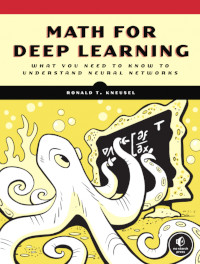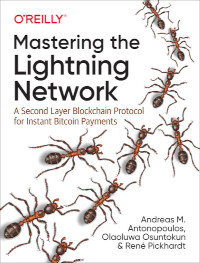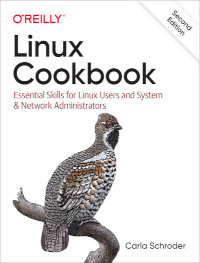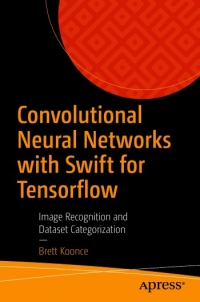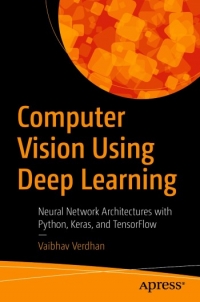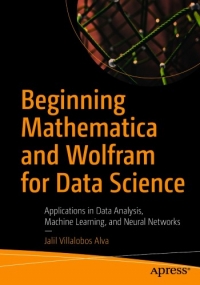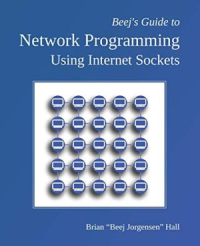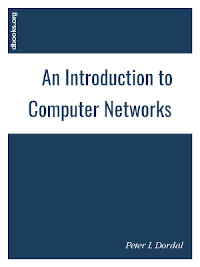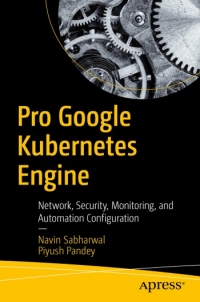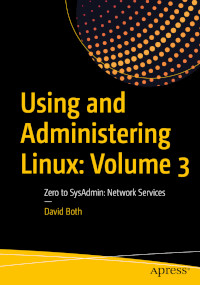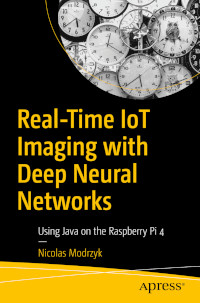Network eBooks
Math for Deep Learning
Deep learning is everywhere, making this powerful driver of AI something more STEM professionals need to know. Learning which library commands to use is one thing, but to truly understand the discipline, you need to grasp the mathematical concepts that make it tick. This book will give you a working knowledge of topics in probability, statistics, linear algebra, and differential calculus - the essential math needed to make deep learning comprehensible, which is key to practicing it successfully. Each of the four subfields are contextualized with Python code and hands-on, real-world examples that bridge the gap between pure mathematics and its applications in deep learning. Chapters build upon one another, with foundational topics such as Bayes' theorem followed by more advanced concepts, like training neural networks using vectors, matrices, and derivatives of functions. You'll ultimately put all this math to use as you explore and implement deep learning algorithms, including backp ...
Deep learning is everywhere, making this powerful driver of AI something more STEM professionals need to know. Learning which library commands to use is one thing, but to truly understand the discipline, you need to grasp the mathematical concepts that make it tick. This book will give you a working knowledge of topics in probability, statistics, linear algebra, and differential calculus - the essential math needed to make deep learning comprehensible, which is key to practicing it successfully. Each of the four subfields are contextualized with Python code and hands-on, real-world examples that bridge the gap between pure mathematics and its applications in deep learning. Chapters build upon one another, with foundational topics such as Bayes' theorem followed by more advanced concepts, like training neural networks using vectors, matrices, and derivatives of functions. You'll ultimately put all this math to use as you explore and implement deep learning algorithms, including backp ...
Mastering the Lightning Network
The Lightning Network (LN) is a rapidly growing second-layer payment protocol that works on top of Bitcoin to provide near-instantaneous transactions between two parties. With this practical guide, authors Andreas M. Antonopoulos, Olaoluwa Osuntokun, and Rene Pickhardt explain how this advancement will enable the next level of scale for Bitcoin, increasing speed and privacy while reducing fees. Ideal for developers, systems architects, investors, and entrepreneurs looking to gain a better understanding of LN, this book demonstrates why experts consider LN a critical solution to Bitcoin's scalability problem. You'll learn how LN has the potential to support far more transactions than today's financial networks. This book examines: How the Lightning Network addresses the challenge of blockchain scaling; The Basis of Lightning Technology (BOLT) standards documents; The five layers of the Lightning Network Protocol Suite; LN basics, including wallets, nodes, and ...
The Lightning Network (LN) is a rapidly growing second-layer payment protocol that works on top of Bitcoin to provide near-instantaneous transactions between two parties. With this practical guide, authors Andreas M. Antonopoulos, Olaoluwa Osuntokun, and Rene Pickhardt explain how this advancement will enable the next level of scale for Bitcoin, increasing speed and privacy while reducing fees. Ideal for developers, systems architects, investors, and entrepreneurs looking to gain a better understanding of LN, this book demonstrates why experts consider LN a critical solution to Bitcoin's scalability problem. You'll learn how LN has the potential to support far more transactions than today's financial networks. This book examines: How the Lightning Network addresses the challenge of blockchain scaling; The Basis of Lightning Technology (BOLT) standards documents; The five layers of the Lightning Network Protocol Suite; LN basics, including wallets, nodes, and ...
Linux Cookbook, 2nd Edition
This handy cookbook teaches new-to-intermediate Linux users the essential skills necessary to manage a Linux system, using both graphical and command-line tools. Whether you run Linux in embedded, desktop, server, or cloud or virtual environments, the fundamental skills are the same. This book aims to get you up and running quickly, with copy-paste examples. Carla Schroder provides recipes that cover specific problems, with discussions that explain how each recipe works, as well as references for additional study. You'll learn how to: Use systemd, the new comprehensive service manager; Build simple or complex firewalls with firewalld; Set up secure network connections for Linux systems and mobile devices; Rescue nonbooting systems; Reset lost passwords on Linux and Windows; Use dnsmasq to simplify managing your LAN name services; Manage users and groups and control access to files; Probe your computer hardware and monitor hardware health; Manage the GRUB bootloader and mul ...
This handy cookbook teaches new-to-intermediate Linux users the essential skills necessary to manage a Linux system, using both graphical and command-line tools. Whether you run Linux in embedded, desktop, server, or cloud or virtual environments, the fundamental skills are the same. This book aims to get you up and running quickly, with copy-paste examples. Carla Schroder provides recipes that cover specific problems, with discussions that explain how each recipe works, as well as references for additional study. You'll learn how to: Use systemd, the new comprehensive service manager; Build simple or complex firewalls with firewalld; Set up secure network connections for Linux systems and mobile devices; Rescue nonbooting systems; Reset lost passwords on Linux and Windows; Use dnsmasq to simplify managing your LAN name services; Manage users and groups and control access to files; Probe your computer hardware and monitor hardware health; Manage the GRUB bootloader and mul ...
Convolutional Neural Networks with Swift for Tensorflow
Dive into and apply practical machine learning and dataset categorization techniques while learning Tensorflow and deep learning. This book uses convolutional neural networks to do image recognition all in the familiar and easy to work with Swift language. It begins with a basic machine learning overview and then ramps up to neural networks and convolutions and how they work. Using Swift and Tensorflow, you'll perform data augmentation, build and train large networks, and build networks for mobile devices. You'll also cover cloud training and the network you build can categorize greyscale data, such as mnist, to large scale modern approaches that can categorize large datasets, such as imagenet. Convolutional Neural Networks with Swift for Tensorflow uses a simple approach that adds progressive layers of complexity until you have arrived at the current state of the art for this field. ...
Dive into and apply practical machine learning and dataset categorization techniques while learning Tensorflow and deep learning. This book uses convolutional neural networks to do image recognition all in the familiar and easy to work with Swift language. It begins with a basic machine learning overview and then ramps up to neural networks and convolutions and how they work. Using Swift and Tensorflow, you'll perform data augmentation, build and train large networks, and build networks for mobile devices. You'll also cover cloud training and the network you build can categorize greyscale data, such as mnist, to large scale modern approaches that can categorize large datasets, such as imagenet. Convolutional Neural Networks with Swift for Tensorflow uses a simple approach that adds progressive layers of complexity until you have arrived at the current state of the art for this field. ...
Computer Vision Using Deep Learning
Organizations spend huge resources in developing software that can perform the way a human does. Image classification, object detection and tracking, pose estimation, facial recognition, and sentiment estimation all play a major role in solving computer vision problems. This book will bring into focus these and other deep learning architectures and techniques to help you create solutions using Keras and the TensorFlow library. You'll also review mutliple neural network architectures, including LeNet, AlexNet, VGG, Inception, R-CNN, Fast R-CNN, Faster R-CNN, Mask R-CNN, YOLO, and SqueezeNet and see how they work alongside Python code via best practices, tips, tricks, shortcuts, and pitfalls. All code snippets will be broken down and discussed thoroughly so you can implement the same principles in your respective environments. Computer Vision Using Deep Learning offers a comprehensive yet succinct guide that stitches DL and CV together to automate operations, reduce human i ...
Organizations spend huge resources in developing software that can perform the way a human does. Image classification, object detection and tracking, pose estimation, facial recognition, and sentiment estimation all play a major role in solving computer vision problems. This book will bring into focus these and other deep learning architectures and techniques to help you create solutions using Keras and the TensorFlow library. You'll also review mutliple neural network architectures, including LeNet, AlexNet, VGG, Inception, R-CNN, Fast R-CNN, Faster R-CNN, Mask R-CNN, YOLO, and SqueezeNet and see how they work alongside Python code via best practices, tips, tricks, shortcuts, and pitfalls. All code snippets will be broken down and discussed thoroughly so you can implement the same principles in your respective environments. Computer Vision Using Deep Learning offers a comprehensive yet succinct guide that stitches DL and CV together to automate operations, reduce human i ...
Beginning Mathematica and Wolfram for Data Science
Enhance your data science programming and analysis with the Wolfram programming language and Mathematica, an applied mathematical tools suite. The book will introduce you to the Wolfram programming language and its syntax, as well as the structure of Mathematica and its advantages and disadvantages. You'll see how to use the Wolfram language for data science from a theoretical and practical perspective. Learning this language makes your data science code better because it is very intuitive and comes with pre-existing functions that can provide a welcoming experience for those who use other programming languages. You'll cover how to use Mathematica where data management and mathematical computations are needed. Along the way you'll appreciate how Mathematica provides a complete integrated platform: it has a mixed syntax as a result of its symbolic and numerical calculations allowing it to carry out various processes without superfluous lines of code. You'll learn to use its noteb ...
Enhance your data science programming and analysis with the Wolfram programming language and Mathematica, an applied mathematical tools suite. The book will introduce you to the Wolfram programming language and its syntax, as well as the structure of Mathematica and its advantages and disadvantages. You'll see how to use the Wolfram language for data science from a theoretical and practical perspective. Learning this language makes your data science code better because it is very intuitive and comes with pre-existing functions that can provide a welcoming experience for those who use other programming languages. You'll cover how to use Mathematica where data management and mathematical computations are needed. Along the way you'll appreciate how Mathematica provides a complete integrated platform: it has a mixed syntax as a result of its symbolic and numerical calculations allowing it to carry out various processes without superfluous lines of code. You'll learn to use its noteb ...
Beej's Guide to Network Programming
Back in the mid 90s, Beej got tired of all his friends asking him how to do this stuff with networking programming in C, so he put pen to paper on the early World Wide Web and wrote down everything he knew just to get them off his back. Since then, the Guide has expanded significantly, with plenty of examples, and covers IPv6. Inside you'll find such diverse topics as: Sockets programming in the C programming language, client/server, IPv4 and IPv6, data encoding, lots of manual pages rewritten in a friendlier format with examples, and goats! Actually no goats, but goats will be with you in spirit! ...
Back in the mid 90s, Beej got tired of all his friends asking him how to do this stuff with networking programming in C, so he put pen to paper on the early World Wide Web and wrote down everything he knew just to get them off his back. Since then, the Guide has expanded significantly, with plenty of examples, and covers IPv6. Inside you'll find such diverse topics as: Sockets programming in the C programming language, client/server, IPv4 and IPv6, data encoding, lots of manual pages rewritten in a friendlier format with examples, and goats! Actually no goats, but goats will be with you in spirit! ...
An Introduction to Computer Networks
An Introduction to Computer Networks, a free and open general-purpose computer-networking free book, complete with diagrams and exercises. It covers the LAN, internetworking and transport layers, focusing primarily on TCP/IP. Particular attention is paid to congestion; other special topics include queuing, real-time traffic, network management, security and the ns simulator. The book is suitable as the primary text for an undergraduate or introductory graduate course in computer networking, as a supplemental text for a wide variety of network-related courses, and as a reference work. ...
An Introduction to Computer Networks, a free and open general-purpose computer-networking free book, complete with diagrams and exercises. It covers the LAN, internetworking and transport layers, focusing primarily on TCP/IP. Particular attention is paid to congestion; other special topics include queuing, real-time traffic, network management, security and the ns simulator. The book is suitable as the primary text for an undergraduate or introductory graduate course in computer networking, as a supplemental text for a wide variety of network-related courses, and as a reference work. ...
Pro Google Kubernetes Engine
Discover methodologies and best practices for getting started with Google Kubernetes Engine (GKE). This book helps you understand how GKE provides a fully managed environment to deploy and operate containerized applications on Google Cloud infrastructure. You will see how Kubernetes makes it easier for users to manage clusters and the container ecosystem. And you will get detailed guidance on deploying and managing applications, handling administration of container clusters, managing policies, and monitoring cluster resources. You will learn how to operate the GKE environment through the GUI-based Google Cloud console and the "gcloud" command line interface. The book starts with an introduction to GKE and associated services. The authors provide hands-on examples to set up Container Registry and GKE Cluster, and you will follow through an application deployment on GKE. Later chapters focus on securing your GCP GKE environment, GKE monitoring and dashboarding, and CI/CD automation ...
Discover methodologies and best practices for getting started with Google Kubernetes Engine (GKE). This book helps you understand how GKE provides a fully managed environment to deploy and operate containerized applications on Google Cloud infrastructure. You will see how Kubernetes makes it easier for users to manage clusters and the container ecosystem. And you will get detailed guidance on deploying and managing applications, handling administration of container clusters, managing policies, and monitoring cluster resources. You will learn how to operate the GKE environment through the GUI-based Google Cloud console and the "gcloud" command line interface. The book starts with an introduction to GKE and associated services. The authors provide hands-on examples to set up Container Registry and GKE Cluster, and you will follow through an application deployment on GKE. Later chapters focus on securing your GCP GKE environment, GKE monitoring and dashboarding, and CI/CD automation ...
Using and Administering Linux: Volume 3
Manage complex systems with ease and equip yourself for a new career. This book builds upon the skills you learned in Volumes 1 and 2 of this course and it depends upon the virtual network and virtual machine you created there. However, more experienced Linux users can begin with this volume and download an assigned script that will set up the VM for the start of Volume 3. Instructions with the script will provide specifications for configuration of the virtual network and the virtual machine. Refer to the volume overviews in the book's introduction to select the volume of this course most appropriate for your current skill level. Start by reviewing the administration of Linux servers and install and configure various Linux server services such as DHCP, DNS, NTP, and SSH server that will be used to provide advanced network services. You'll then learn to install and configure servers such as BIND for name services, DHCP for network host configuration, ...
Manage complex systems with ease and equip yourself for a new career. This book builds upon the skills you learned in Volumes 1 and 2 of this course and it depends upon the virtual network and virtual machine you created there. However, more experienced Linux users can begin with this volume and download an assigned script that will set up the VM for the start of Volume 3. Instructions with the script will provide specifications for configuration of the virtual network and the virtual machine. Refer to the volume overviews in the book's introduction to select the volume of this course most appropriate for your current skill level. Start by reviewing the administration of Linux servers and install and configure various Linux server services such as DHCP, DNS, NTP, and SSH server that will be used to provide advanced network services. You'll then learn to install and configure servers such as BIND for name services, DHCP for network host configuration, ...
Real-Time IoT Imaging with Deep Neural Networks
This book shows you how to build real-time image processing systems all the way through to house automation. Find out how you can develop a system based on small 32-bit ARM processors that gives you complete control through voice commands. Real-time image processing systems are utilized in a wide variety of applications, such as in traffic monitoring systems, medical image processing, and biometric security systems. In Real-Time IoT Imaging with Deep Neural Networks, you will learn how to make use of the best DNN models to detect object in images using Java and a wrapper for OpenCV. Take a closer look at how Java scripting works on the Raspberry Pi while preparing your Visual Studio code for remote programming. You will also gain insights on image and video scripting. Author Nicolas Modrzyk shows you how to use the Rhasspy voice platform to add a powerful voice assistant and completely run and control your Raspberry Pi from your computer. To get your voice intents for house auto ...
This book shows you how to build real-time image processing systems all the way through to house automation. Find out how you can develop a system based on small 32-bit ARM processors that gives you complete control through voice commands. Real-time image processing systems are utilized in a wide variety of applications, such as in traffic monitoring systems, medical image processing, and biometric security systems. In Real-Time IoT Imaging with Deep Neural Networks, you will learn how to make use of the best DNN models to detect object in images using Java and a wrapper for OpenCV. Take a closer look at how Java scripting works on the Raspberry Pi while preparing your Visual Studio code for remote programming. You will also gain insights on image and video scripting. Author Nicolas Modrzyk shows you how to use the Rhasspy voice platform to add a powerful voice assistant and completely run and control your Raspberry Pi from your computer. To get your voice intents for house auto ...
